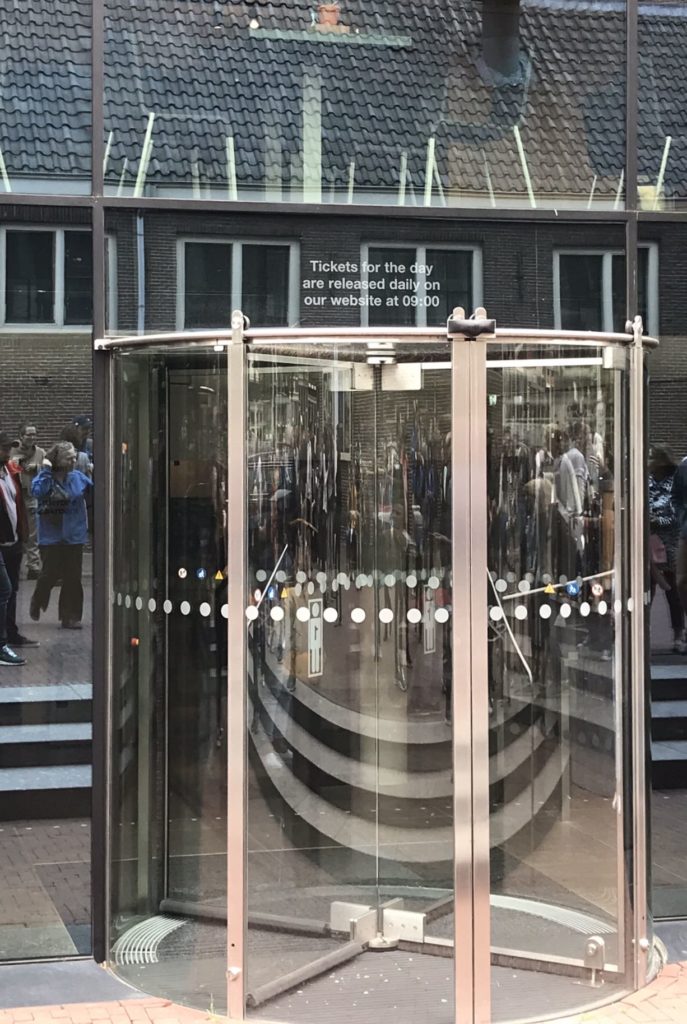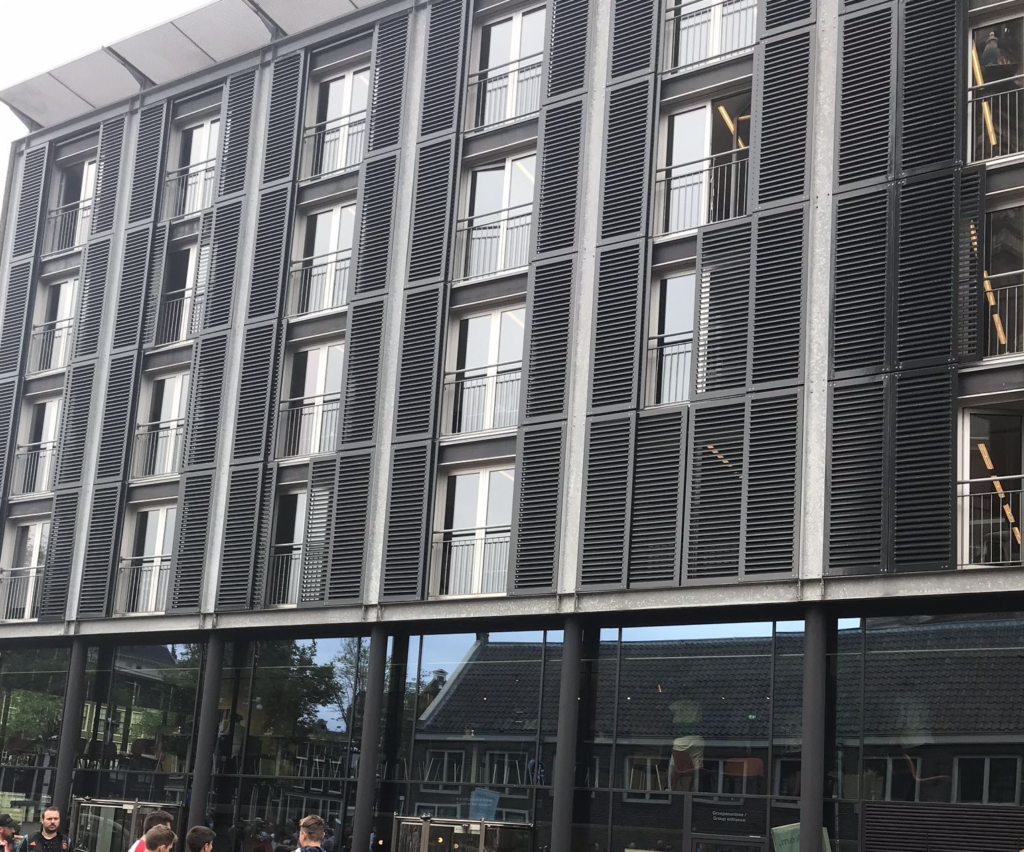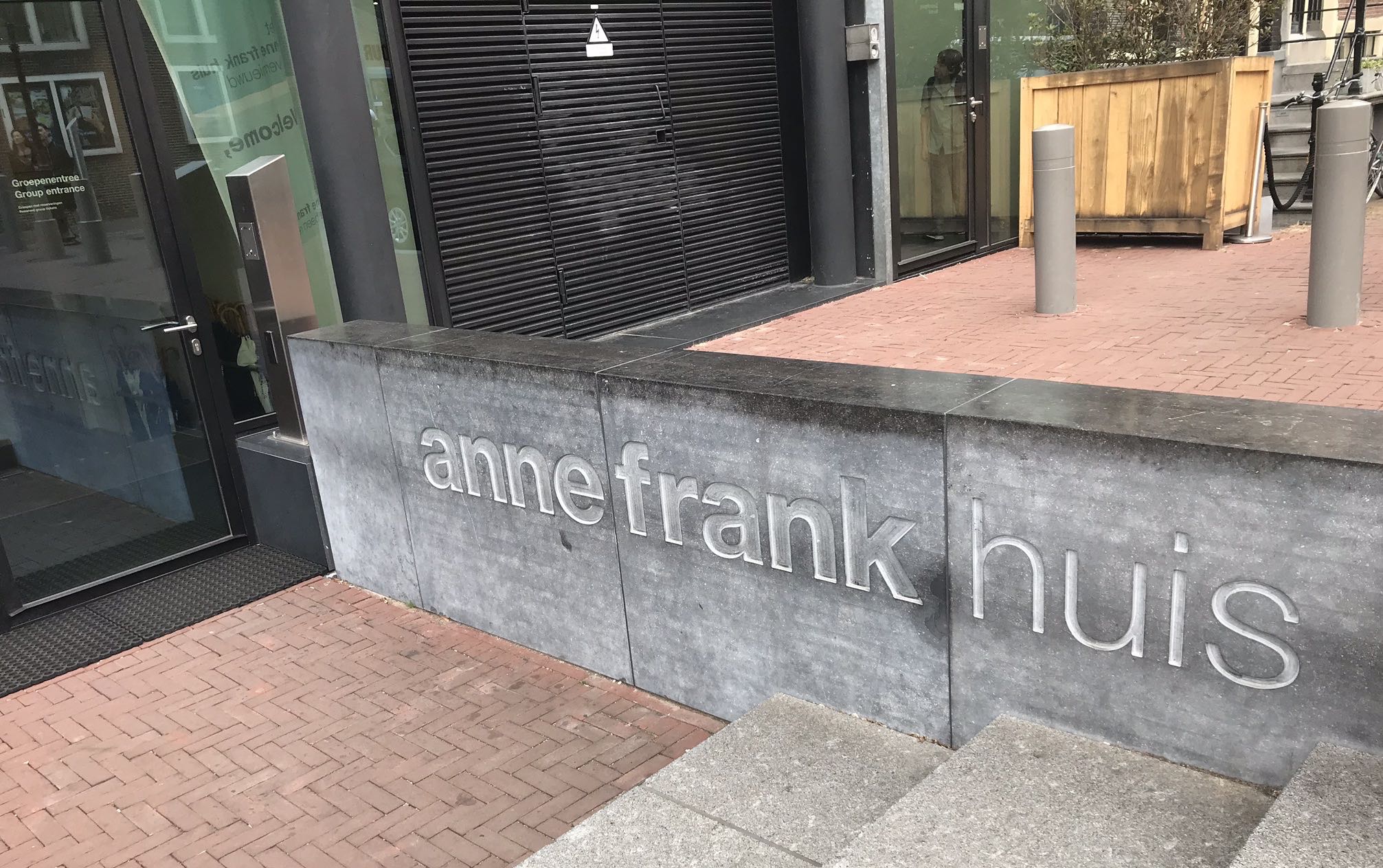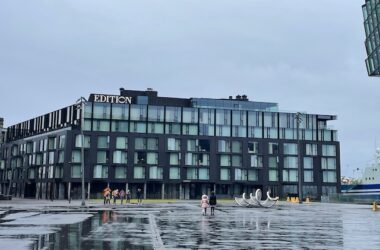When I was planning my trip to Amsterdam, the Anne Frank House Museum was one of the top places I want to visit. I purchased my tickets about 6 weeks prior to travel, with plenty of availability left. If you want to visit the Anne Frank House, be sure to purchase your tickets ahead of time. (They are released 2 months in advance.) Tickets were sold out on the day of our visit.
You can only enter the museum during your scheduled time-slot. Once you are in, you can pick up an audio guide. You can expect to spend about 45 minutes to an hour for the self-guided tour.


Some Logistical Notes
- No photography is allowed inside.
- You have to check-in any large bags. Small bags are allowed.
- Note that there are quite a few stairs to climb and some confined spaces. Some of those stairs are steep. If you have mobility issues, you would not be able to visit the historic parts of the building as there is no elevator.
If you happen to visit Netherlands at the beginning of the month, be aware that their public warning sirens are tested on the first Monday of every month at noon. I was on the self-guided tour when the test triggered the emergency alerts on my phone. Quite a few people were caught off-guard by theirs as well, especially since we were in a quiet, somber setting. If you happen to visit on the first Monday at noon, I might suggest turning off your phone.

Who Was Anne Frank?
If you don’t know the story of Anne Frank, you can read her biography and here. She was born in Germany, but she and her family fled to Amsterdam during World War II during the Nazi persecution of Jews. They hid in a house (in a secret annex) for 2 years with another family. She and the others were aided by “helpers” who put their own lives at risk by providing them with food and other essentials.
In August of 1944, Anne Frank and her family were discovered at the secret hiding place and they were arrested. Her family was separated and Anne Frank and her sister were sent to a concentration camp, where they both died. The exact dates of death is unknown, but it is thought that she died of typhus at the Bergen-Belsen concentration camp in February 1945. They died just months before the Allied forces liberated the concentration camps at the end of World War II.
Should You Read The Book Before Your Visit?
I read “The Diary of Anne Frank” (sometimes referred to as the “Diary of a Young Girl“) around the age when she had written it. I had long forgotten most of the details before my visit. You don’t have to read her “diary” ahead of time to fully appreciate the circumstances of the time in which she lived, the dreams and aspirations of a young girl, and the constant fears of being discovered while in hiding.
You won’t get as much of the WWII history as the focus is on Anne Frank and the secret annex, but it would be helpful to brush up on the history. Millions of lives were lost during World War II (1939-1945). During the Holocaust, it is estimated that the lives of 4.9 and 5.9 million Jews were lost during the genocide. She was one of the many millions of casualties from the war. It was an atrocious time in history.
WWII seemed like a time long ago and yet it isn’t. (If I think about it, my grandparents were alive then). History teaches us important lessons. As one of my history teachers in high school often quoted from Winston Churchill, “Those who fail to learn from history are condemned to repeat it“.
Final Thoughts
Stepping into the museum and seeing the secret annex put everything I read in more real terms. Knowing that there were those who put their lives at risk to protect others through the most turmoil of times (war) is a reminder of the good in this world. One of my all-time favorite quotes actually comes from Anne Frank,
“In spite of everything, I believe that people are good at heart”.
Even when situations have tested my faith in people, even when I question some of my own choices, and even when sometimes there seems to be so much hate or fear in the world, I still believe in that quote with every core of my being.
In some ways, I don’t ever want to live in a world where I don’t believe in it, because it would mean that I am living in a world without much hope.
It’s like another similar quote from Mr Fred Rogers,
“When I was a boy and I would see scary things in the news, my mother would say to me, “Look for the helpers. You will always find people who are helping.”
I think it’s important to remember that. And we can all be helpers in our own lives, even in the smallest of ways.
If you ever have the chance to make your way to Amsterdam, the Anne Frank house is definitely well worth a visit. It’s a piece of history. If you have other tips to share with other readers, please chime in below.













I have distinct memories of cramped spaces and narrow staircases from visiting this museum many years ago. It looks like they’ve done a lot to build up the museum around the house since I was there. In times like these it’s important to visit this museum and to remember Anne Frank and her family — more important these days than it has been since the Second World War, I’d say. So thanks for sharing and good choice of subject matter.